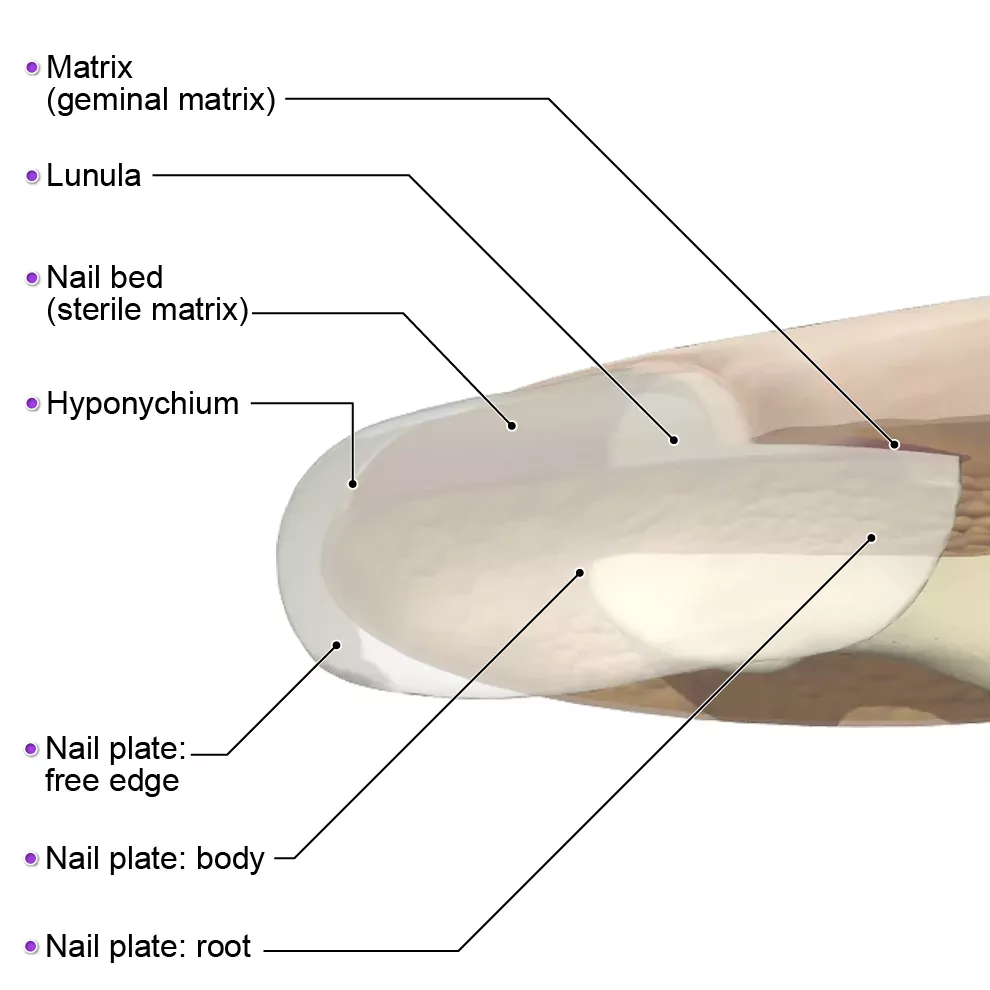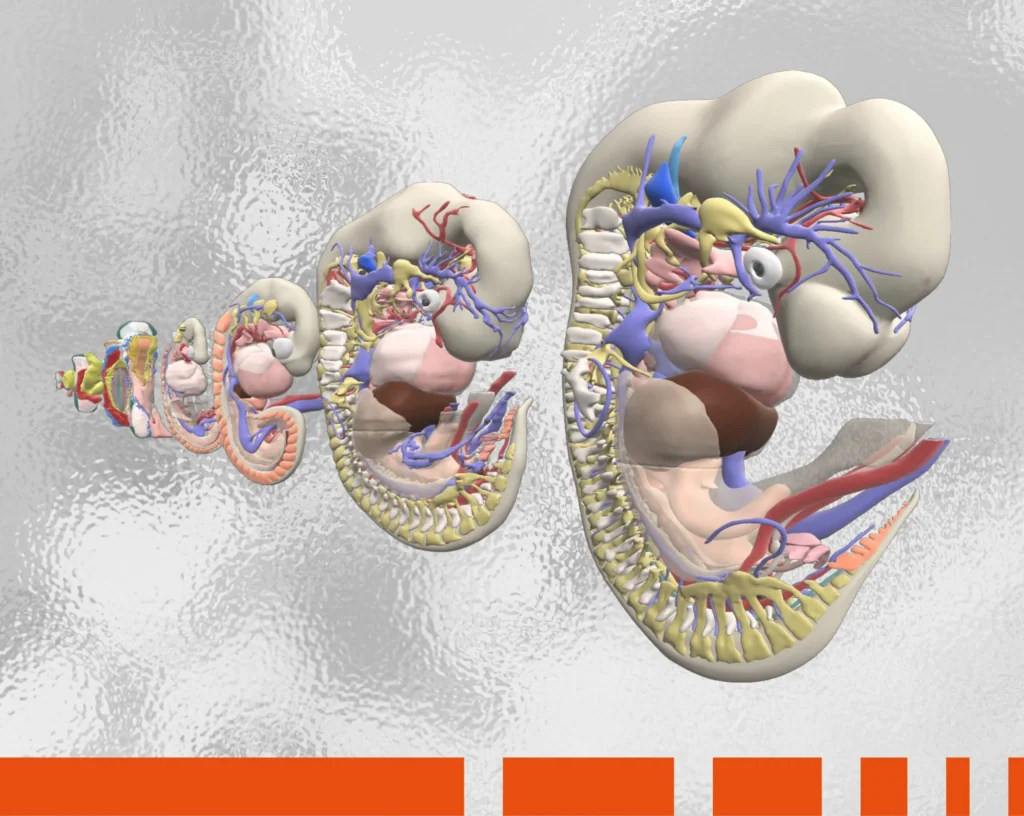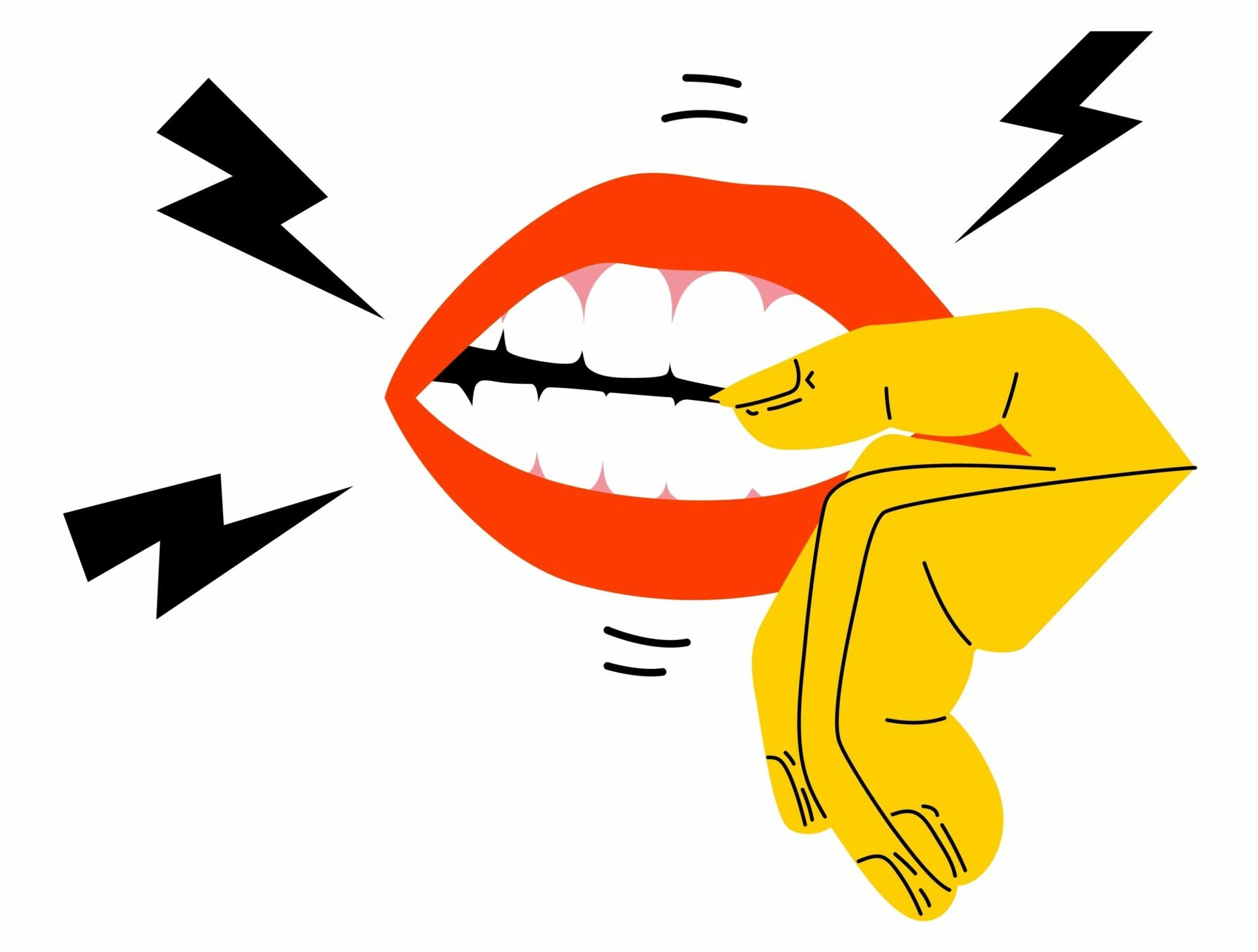Most of us have been there: waiting for important news, taking a critical exam, watching a scary movie or maybe just bored and looking for stimulation. Before we know it, we’re absent-mindedly chewing on a fingernail – or in some cases, maybe even a toenail. Known by the medical name “onychophagia,” nail biting falls into the category of a body-focused repetitive behavior (BFRB). For some, it can stretch beyond the occasional nip at the fingertips to become a serious compulsion with both psychiatric and dermatologic consequences.
Sinking your teeth into nail-biting
Nail biting is a common habit with onset frequently seen in childhood. Some 20-33% of children exhibit this behavior, which ramps up in adolescence when about 45% of teens engage in nail biting. As nail biters enter adulthood, the behavior tends to taper off, with smoking or gum chewing often becoming a replacement. But for many, it remains a serious issue and can be an extremely difficult habit to break.
While not officially a disorder classified in the Diagnostic and Statistical Manual of Mental Disorders, Fifth Edition (DSM-V), nail biting is associated with obsessive-compulsive disorder (OCD) and is considered a BFRB, similar to hair pulling or skin picking. Depending on the severity, it can also be considered a form of self-injurious behavior. Nail biting is also common among those with attention deficit disorder (ADD), oppositional defiant disorder (ODD) and separation anxiety disorder, and may be linked to other comorbid conditions like major depressive disorder (MDD) and autism spectrum disorder (ASD). Nail biting also tends to run in families, with the behavior more commonly found in children whose parents also nibble their nails. The habit is also more prevalent among kids who have a mother or father with a psychiatric disorder, most often MDD.
Common causes
Of course, not everyone who bites their nails has a diagnosed mental or physical condition. For many people, nail biting is a response to being either over- or under-stimulated. Reasons often cited for engaging in the act include:
-
- Nervousness – Chewing on nails can momentarily alleviate feelings of stress or anxiety.
-
- Boredom – Absent-mindedly biting on the nails occupies both the hands and mind.
-
- Imitation – Children may copy what they see their parents or other adults or peers doing.
-
- Big emotions – Dealing with things like trauma in a physical way may manifest as nail biting.
Biting off more than you can chew? The anatomy of the nail
We have talked about the reasons why some of us find it irresistible to trim our nails with our teeth, but what exactly are we biting into when we bite our nails? Turns out, fingernails and toenails are made of dead keratinized epidermal cells; in other words, they are more or less hard, clear skin. These nails form a clear plate that covers the tips of the fingers and toes. The nails are each comprised of five main parts:
-
- The nail plate is what we normally think of when we think of a fingernail (or toenail). It’s the translucent, visible portion of the nail and has three parts:
- The root, which begins several millimeters into the finger or toe.
- The body, or main portion of the nail.
- The free edge, or outermost part of the nail that extends over the tip of the toe or finger.
- The nail plate is what we normally think of when we think of a fingernail (or toenail). It’s the translucent, visible portion of the nail and has three parts:
-
- The nail bed is the connective tissue that lies under the plate and adds keratin to the nail. It is sometimes also called the sterile matrix.
-
- The lunula is the scientific name for the white half-moon at the base of your nail where it meets the rest of your finger.
-
- The germinal matrix (or simply “matrix”) surrounds the nail root and is the spot where most nail growth takes place.
-
- The hyponychium is a thickened area of skin located underneath the free edge and secures the nail to the fingertip (or toe).

Nail biting dangers
Nail biters may intellectually understand the disadvantages of their actions, but stopping this habitual behavior can be easier said than done. While many individuals who bite their nails as children and adolescents will simply outgrow the compulsion, others may require more regimented interventions as they become adults still struggling with the habit.
What can be done? The first step is identifying nail biting as a habit you want to break. Make the commitment and don’t be too hard on yourself if it takes several attempts to stop. Changing your behavior isn’t always easy, but there are many tactics you can try, including:
-
- Keeping your nails short – The shorter they are, the less of them there is to bite.
-
- Painting your nails – Spending money for a professional manicure may deter you from destroying it by chewing on it. There are also bitter-tasting polishes you can apply to your nails at home that make the experience of nail biting more unpleasant.
-
- Covering your nails – Create a physical barrier between your teeth and your nails in the form of gloves, Band-Aids or stickers that can remind you not to put your fingers in your mouth.
-
- Replacing the activity – If you find you often bite your nails when you’re bored or feeling anxious, try playing with a fidget toy to occupy your hands and provide an outlet for your feelings. Some former nail biters find it helpful to replace their habit with gum chewing to satisfy their cravings.
-
- Getting professional help – Working with a therapist who specializes in cognitive behavioral therapy (CBT) can help you identify your triggers and implement a behavior plan to recognize the causes of your nail biting and take the right steps to eventually stopping it. This can be an effective approach, especially for those with a severe issue. Other psychological modalities shown to be effective in helping people stop nail biting are hypnotherapy, functional analysis therapy, habit reversal therapy and aversive therapy.
-
- Some nail biters may find it helpful to take a gradual approach to quitting, working at not biting the nail on one finger at a time until every finger is eventually eliminated as a target for your teeth.
No matter your approach to kicking the nail-biting habit, remember that shame and blame and punishment, especially for kids, has been shown to be ineffective and even harmful. Instead, consider implementing a reward system to encourage desired behavior. Keep in mind that quitting is a process. With time, mindfulness and persistence, the idea of not biting your nails will no longer be a nail biter.
The content in this post is from Primal’s 3D Atlas and Human Anatomy and Physiology product. To learn more about these or other Primal learning resources, please fill in the form here and our team will be in touch.

